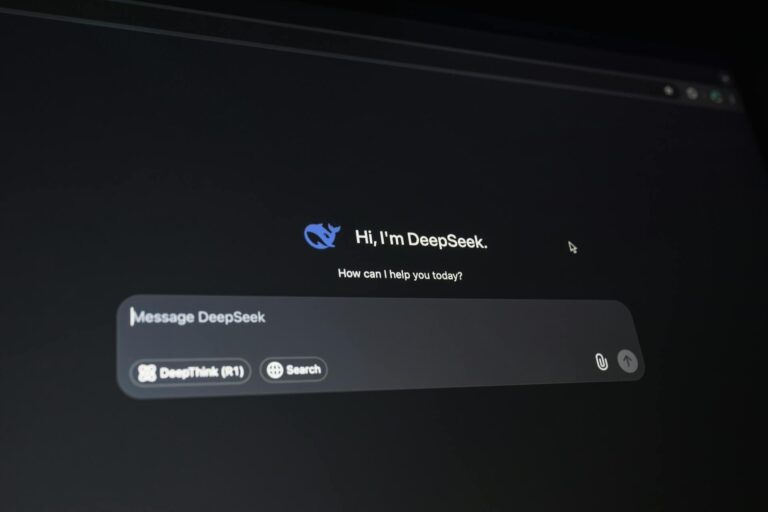
What are the forces shaping software and data-driven industries in 2025? Hint: It’s AI, says our panel of experts.
Mav Turner - Chief Product and Strategy Officer, Tricentis
In the wake of the CrowdStrike outage, tech leaders are confronting a stark reality: the cost of a single software failure can be devastating. The incident, which resulted in billions in damages and a sharp decline in CrowdStrike’s stock value, is a powerful reminder of the critical importance of robust software testing and quality assurance in 2025 planning.
Modern software development moves at breakneck speed, with companies pushing updates frequently to stay competitive. However, this rapid pace often results in testing becoming an afterthought or, worse, perceived as a bottleneck rather than a priority. Tech leaders can no longer afford this mindset. The complexity of today’s digital environments, with systems interconnected across diverse platforms, means a single failure can cascade into widespread disruption. Effective testing strategies must be adopted to ensure that software remains reliable even under intense pressure.
Automation in testing is the cornerstone of speed and accuracy. It enables teams to cover more ground than manual testing ever could, ensuring that even the most minor changes are thoroughly validated. Automated testing also allows continuous feedback loops to catch and correct defects early in the development process. As businesses increasingly rely on continuous integration and deployment (CI/CD) pipelines, automation will be vital to maintaining both velocity and quality.
As software development embraces AI, a more nuanced approach to testing is also required. GenAI-powered tools are already enabling faster, more efficient testing cycles. Analysing code changes in real-time provides developers with actionable insights that reduce the likelihood of failure. However, even advanced tools require careful application; testing must be tailored to each software’s specific use case, ensuring that high-risk areas receive more focus.
Indeed, adapting testing to user scenarios ensures that software aligns with real-world examples. Businesses should simulate diverse user behaviours and conditions rather than relying solely on standardised testing environments. This approach helps uncover issues that might not surface in controlled settings, improving both reliability and overall user experience. By tailoring testing to specific operational contexts, businesses can ensure their solutions perform optimally where and when it matters most.
The CrowdStrike outage also underscores the importance of testing beyond internal systems. Integrations with third-party services and the growing reliance on cloud infrastructure introduce new layers of complexity and risk. Effective software testing in 2025 will account for these external factors through techniques like service virtualisation and chaos testing, ensuring that applications can withstand the failures of interconnected systems.
Ultimately, tech leaders must prioritise software testing to safeguard their businesses from the immense costs of failure. By embracing automation, adapting testing to real-world conditions, and accounting for both internal and external risks, companies can protect themselves in an increasingly volatile digital landscape.
Rajasekar Sukumar - SVP and Head – Europe, Persistent Systems
As we move toward 2025, leaders across IT services, software development, and data-driven industries are at a critical crossroads. This is defined by the rapid convergence of advanced technologies like AI and data science, reshaping the knowledge sector and beyond. A top priority for industry leaders will be scaling the adoption of AI, particularly Generative AI (GenAI).
These technologies are no longer just enhancing operations or research – they’re becoming central to strategy. We’re already seeing AI automate routine tasks, boost developer productivity, and sharpen decision-making. But its true impact lies in unlocking new revenue models and transforming customer experiences in ways we’ve only begun to explore.
Data remains at the heart of this evolution. In 2025, organisations must focus on building AI-powered data ecosystems that prioritise governance and quality. This is especially crucial in fields like research and government, where AI’s potential depends on the reliability of the data it processes. At Persistent, we’ve seen firsthand how our platforms like SASVA™ and iAURA enhance data management and drive innovation across industries. But for any AI strategy to succeed, a solid foundation of well-organised, high-quality data is essential.
Frameworks for responsible AI are becoming essential as businesses look to implement AI responsibly, particularly in sectors like healthcare and government, where privacy and compliance are critical. Industry-wide, we are seeing cross-functional efforts to establish standards for ethical AI usage, ensuring secure and transparent integration at scale.
Equally important is collaboration. Whether through partnerships with clients or alliances with AI and cloud hyperscalers, success will come to those who embrace co-creation and foster innovation ecosystems. Leaders who can drive AI adoption while remaining adaptable and collaborative will be well-positioned to stay ahead of industry shifts.
As we look to 2025, the focus for technology leaders will centre on AI integration, data integrity, security, and partnerships. Those who lead with agility and foresight will not only keep pace with change but also shape the future of their industries.
Andrew Greenway - Co-Founder and MD, Public Digital
In 2025, we will find out where the government’s enthusiasm for digital and technology really lies.
The new government has several ministers who claim real enthusiasm for digital, data and technology. This political attention will be essential for creating the impetus to push through the bureaucracy.
There are reasons for cautious optimism now this agenda has several voices sitting around the Cabinet table. Peter Kyle will be the frontman as Secretary of State for the Science and Tech department and home of the new digital centre. But he should find backing from big beasts in the Cabinet Office and Treasury.
Labour has been vocal in describing itself as being mission-led, reform-driven and technology-enabled. Abstract concepts they may be, but these set out a stall that makes tech a headline, rather than down in the weeds. The five missions set by the government should provide focus for public service reform efforts. They also imply that public bodies will think harder about how they go about delivering services, as much as what they deliver. 2025 might see the conventional mega-programme structure which governs most public sector projects start to unwind. Instead, reformers will adopt ways of working that more resemble those found in firms of the internet era than the echoing corridors of Whitehall. Multidisciplinary teams, test-and-learn approaches, tying together local and central government; these have been achieved by the state in exceptional circumstances, but tend to slip away in more peaceful moments.
Working in new ways will be important, because there isn’t going to be lots of new money to throw around. Details of the long-term spending picture won’t emerge until next spring. But the autumn budget is likely to set a tone of fiscal rectitude. While looking between the sofa cushions for spare cash, the government may choose to follow Australia’s example, canning some big technology projects where the whiff of doom and sunk cost fallacy pervades. If it chooses this route, it will wield the axe sooner rather than later. The window for blaming the last lot for all that red on the risk register will slam shut soon.
Finally, there is bound to be a great deal more noise about solutions searching for problems. AI, digital ID cards, and the like will excite much commentariat interest, and they may be a big part of the future. But the things most likely to actually move the needle are often cheaper, simpler and harder. Delivering services that impose a lighter burden on the public – or not – is a political choice. So is making announcements that thrill the Westminster bubble.
Wilson Chan - Founder and CEO, Permutable AI
The knowledge landscape is increasingly shaped by real-time data flows, making one of the biggest opportunities for 2025 the embedding of AI-driven contextual understanding into every facet of information processing. All this means that decision-makers across industries will need more than just raw data; they will require systems that are contextually aware, capable of deciphering patterns, anticipating shifts, and recommending optimal actions. At Permutable AI, we are already witnessing how predictive analytics, powered by AI, can significantly enhance businesses’ ability to navigate global market uncertainties.
And that’s before we address the complexities of interpreting the sheer volume of data in real-time. Contextual AI is essential because it doesn’t just surface information – it interprets the nuances of evolving situations. You get a sense that businesses can no longer afford to rely on static models. A contextual AI system can account for these dynamics, helping businesses move beyond reactive approaches to proactive strategies.
For instance, we apply contextual AI in our financial sector use cases, providing minute-to-minute insights into stock performance, investor sentiment, and even the impact of global media on corporate reputations. By factoring in geopolitical events, social trends, and economic indicators, this allows businesses to predict changes in market sentiment and respond to emerging risks in real-time. This sounds – and is – a significant advantage, but it’s only the beginning.
It’s the same story in other sectors, such as healthcare, where real-time data on global health trends can dramatically improve patient care decisions. As with most things in technology, the impact here is transformative, and the potential goes far beyond initial expectations. In government, understanding the broader societal impacts of policy decisions is crucial, and contextual AI can provide the strategic insights needed to make informed, timely decisions.
Now for the critical question: In this scenario, how do businesses adopt and fully leverage contextual AI? There’s a reason why many organisations are now turning to AI-driven systems – those that can extract value from real-time data flows will be best equipped to thrive. Moving on into 2025, contextual AI will increasingly offer a new level of strategic foresight. This year, it was seen as a competitive advantage. Going forward, it will become a strategic necessity.
Rodolphe Malaguti - Product Strategy & Transformation, Conga
Whilst technology spending is expected to increase next year, businesses will have learned many lessons from the last 12-18 months. Artificial intelligence (AI) will continue to be a major focus for organisations, but most organisations will have encountered issues when it comes to implementation, as their data systems are not configured to fully leverage or scale these AI tools effectively. There is still a lot of hype around the technology, but businesses cannot afford to keep redesigning, remodelling AI programmes.
Next year, organisations will review their budgets and IT leaders will need to be able justify their chosen solutions if they haven’t delivered. No doubt the key focus areas for next year will be customer experience and engagement as well as improving analytics capabilities. Teams will be focusing their time and efforts on where AI can be applied to boost these areas but mindful of their budgets at the same time.
AI needs to be provided with the appropriate data and have the necessary infrastructure in place to make informed and intelligent decisions. If an organisation’s data architecture is plagued by inaccuracies, poor processes, or if data is unstructured and siloed between departments, how can teams implement and use new AI tools or software effectively? Especially when the data that they do have is not a true reflection of how the business is currently operating.
Most organisations never consider reviewing their data architecture or operational model prior to implementation. Digital change programs are extremely complex because there are so many teams, processes, and systems involved, many of which are siloed or disconnected. It is important that IT leaders establish a unified data model for the entire business. That is, one streamlined data cycle, where all data is easily shared between teams. Most importantly, all data needs to be accountable, accurate, and actionable across each stage of the business cycle.
By focusing on system integration and data integrity, IT teams will have a better understanding of where changes needed to be made ahead of 2025 and where digital and AI tools would be better suited. They will have a clearer picture of how data flows between their systems, teams and throughout various departments, which in turn, will empower their chosen technologies and solutions.







